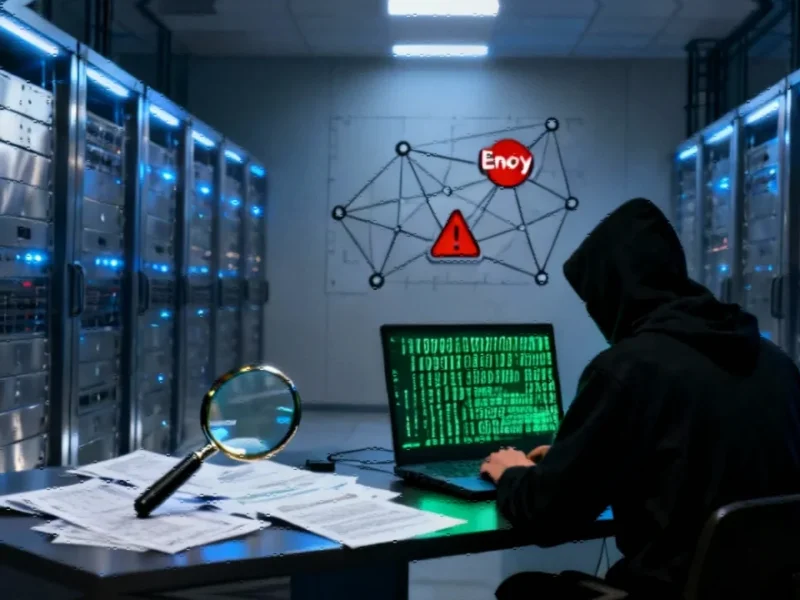According to TechRadar, former FBI General Counsel James A. Baker made a surprising defense of strong encryption during Global Encryption Day events on October 21, arguing that “encryption is vital to law enforcement to protect society.” Baker specifically criticized client-side scanning proposals like the EU’s Chat Control initiative, calling them “a fundamentally bad idea” that would expose people to more threats rather than protect them. The former investigator acknowledged law enforcement’s “going dark” problem but argued that creating backdoors ultimately undermines security for everyone, including investigators. Baker’s comments come as lawmakers increasingly push for ways to access encrypted communications, particularly through client-side scanning technology that would scan messages before encryption. This perspective from a former top law enforcement official adds weight to long-standing technical arguments against encryption backdoors.
Table of Contents
The Technical Reality Behind Backdoor Proposals
What makes Baker’s position particularly significant is that it acknowledges the fundamental technical reality that security experts have emphasized for decades: there’s no such thing as a backdoor that only “good guys” can use. When you create a vulnerability in encryption systems, you’re not building a special entrance for law enforcement—you’re creating a weakness that sophisticated threat actors will inevitably discover and exploit. This isn’t theoretical; we’ve seen multiple instances where government-held surveillance tools or vulnerabilities have been leaked, stolen, or reverse-engineered by adversaries. The very nature of how encryption works means that any intentional weakness affects the entire security model, potentially compromising everything from financial transactions to critical infrastructure protection.
Why Client-Side Scanning Creates More Problems
The EU’s Chat Control proposal represents a particularly concerning evolution in the encryption debate. Unlike traditional backdoors that target encryption algorithms themselves, client-side scanning operates before encryption occurs, scanning messages on users’ devices. As Baker noted, this approach creates multiple new vulnerabilities. First, it requires placing scanning software directly on user devices, creating new attack surfaces for malware. Second, the scanning databases and algorithms themselves become high-value targets for attackers. Third, once this scanning capability exists, mission creep is inevitable—what begins as scanning for child abuse material could easily expand to other types of content monitoring. The technical infrastructure required for mass client-side scanning would essentially create a global surveillance architecture that could be abused by both state and non-state actors.
The Law Enforcement Dilemma in the Digital Age
Baker’s comments reveal a sophisticated understanding of modern law enforcement challenges that goes beyond the simplistic “encryption vs. safety” narrative. While the “going dark” problem is real, the solution isn’t weakening security for everyone. Instead, forward-thinking investigators recognize that strong encryption protects the very infrastructure law enforcement relies on—from secure communications between officers to protection of evidence databases. Furthermore, the alternative investigative methods available to law enforcement have grown significantly, including metadata analysis, financial tracking, traditional surveillance, and cooperation from service providers. The most effective approach recognizes that in an era of increasing cyberattacks, strong encryption isn’t the enemy of investigation—it’s a necessary tool for protecting the digital ecosystem where investigations occur.
Broader Implications for Digital Security
The ongoing encryption debate has significant implications beyond messaging apps. The same encryption technologies that protect private messages also secure corporate networks, financial transactions, medical records, and critical infrastructure. If backdoors or client-side scanning become mandated in one jurisdiction or for one purpose, the precedent could undermine global digital security across multiple sectors. Technology companies face difficult choices between complying with local laws and maintaining global security standards. Meanwhile, the mere discussion of backdoors can drive security-conscious users and businesses toward less regulated platforms or jurisdictions, potentially creating exactly the ungoverned spaces that law enforcement seeks to avoid.
A Realistic Path Forward
Baker’s perspective suggests a more nuanced approach to the encryption debate. Rather than fighting technological reality, law enforcement and policymakers should focus on developing investigative techniques that work within encrypted environments. This includes better international cooperation, improved forensic capabilities, and targeted interventions that don’t require breaking encryption for everyone. The annual Global Encryption Day serves as an important reminder that this isn’t just a technical debate—it’s about protecting the fundamental security that enables modern digital life. As more voices from within law enforcement recognize this reality, we may see more productive approaches to balancing security and investigation in the digital age.



